
Thank you for visiting the website of Jeisys Medical Japan.
Medical HIFU is popular for its lifting effect without scalpels, and more and more people become interested in it in Japan.
In this article, Dr. Jae Kim, Director of Rienjang Myeongdong Clinic, introduces the features and procedure of ULTRAcel [zi:], a medical HIFU developed as an evolution of ULTRAcelQ+ in 2022.
- INDEX
ULTRAcel[zi:] Features & Advantages(1:17~)
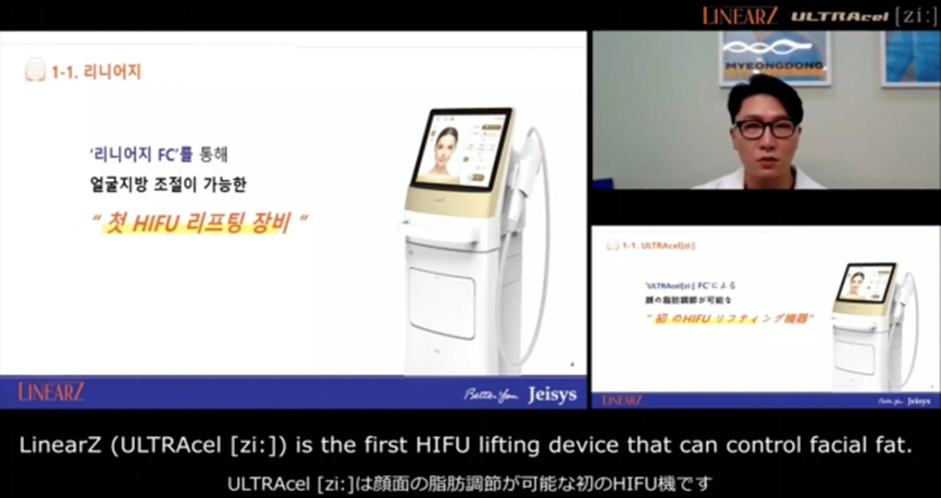
ULTRAcel [zi:] is the 3rd Gen HIFU device, next to the 1st Gen ULTRAcel Dot mode and the 2nd Gen LINEAR FIRM Linear mode, launched in 2014.
Its three main features are:
1. The ability to work on the fat layer in addition to 2 functions of Dots and Linear mode.
2. Dot/Linear mode selection and irradiation depth can be controlled with a single cartridge.
3. New design to avoid overlap of irradiation when folding back, improving treatment speed and safety.
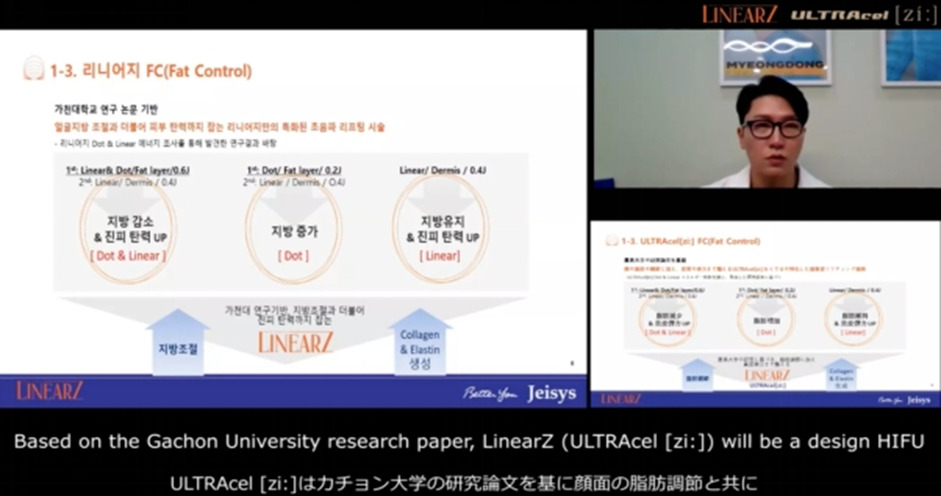
On the basis of research at Gachon University, ULTRAcel [zi:] is expected to have the following effects.
- Dissolution of fat cells/Activation of collagen and elastin in the dermis layer
- Increase in the number of adipocytes
- Activation of collagen and elastin in the dermis layer while maintaining adipocytes
In particular, promoting fat dissolution is a key advantage of it. It is a good idea to introduce it to patients as “a HIFU machine that can work on the fat layer and improve sagging”.
ULTRAcel[zi:] Unique and innovative technologies(3:50~)
First, regarding the cartridges. Without changing during treatment, Linear and Dot irradiation can be set, and the depths can be selected from 1.5 mm, 2.0 mm, and 3.0 mm. Easy to use and designed to avoid accident risk.

The most frequently used “Essential Cartridge” has 6 modes of treatment, and the body-use “Contour Cartridge” also provides 6 modes. No cartridge replacement is required, allowing users to focus on treatment with shorter treatment time.
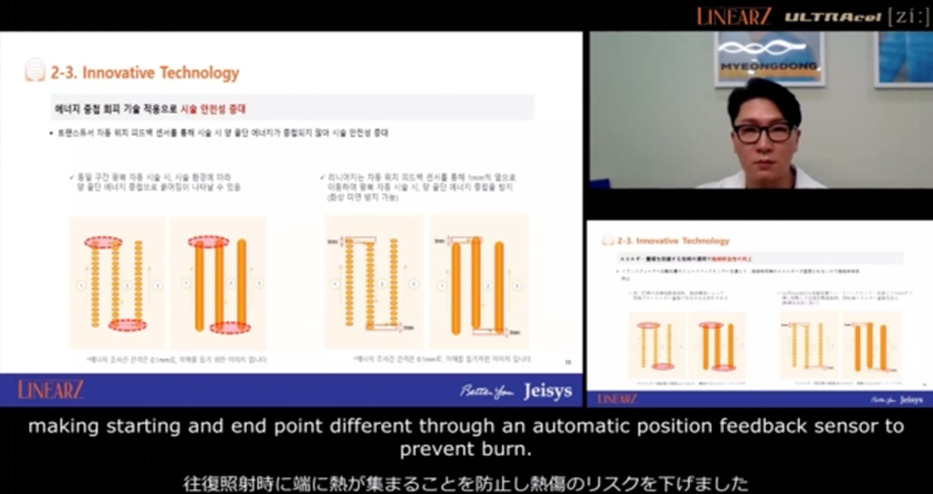
Secondly about safety feature when irradiating back and forth(Secondly about functions during return irradiation)
Normally, return irradiation causes heat collection, but the sensor’s ability to shift irradiation by 1mm has successfully avoided heat collection and reduced burn risks. This allows faster treatment than our former model “ULTRAcelQ+”.
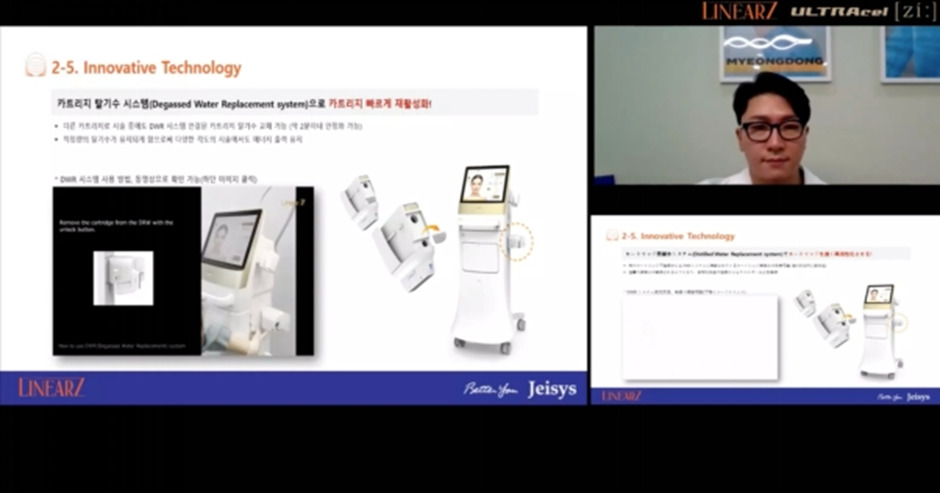
Thirdly, about the cartridge distilled water replacement system.
This new system ensures proper maintenance of distilled water and stable irradiation even during treatment with other cartridges.
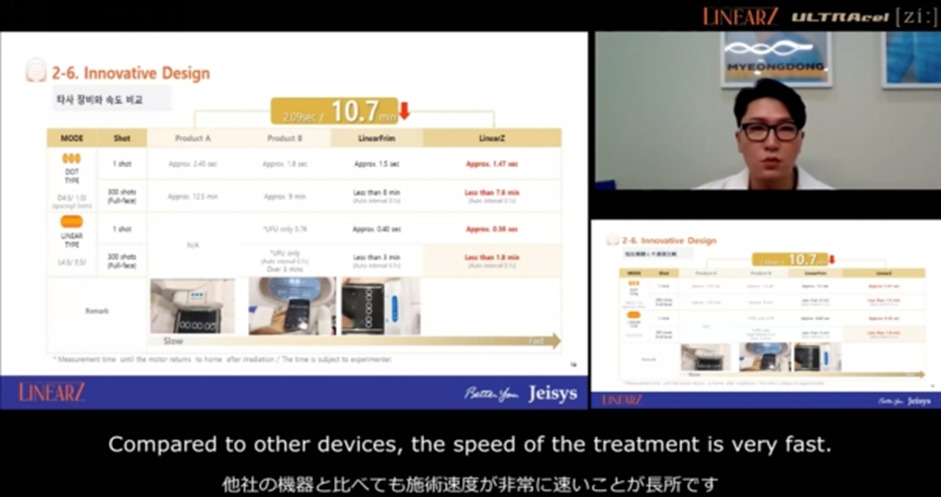
Compared to other devices, the speed of the treatment is very fast.
For example, 300 shots of Ulthera’s Dot mode takes about 13 minutes, but 300 shots of ULTRAcel[zi:]’s Linear mode can be completed within 1.8 minutes. This means more than 6 to 8 times more patients can be irradiated in an hour.
This technique allows for a sufficient number of shots while reducing patient pain. Patients are more likely to be highly satisfied with this treatment.
Treatment procedures based on research results from Gachon University(7:38~)
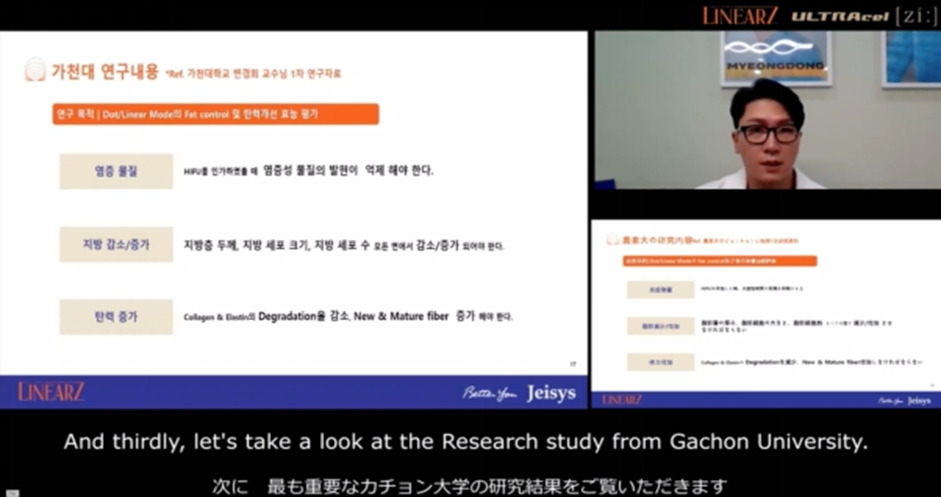
In order to report that ULTRAcel [zi:] has potential to work on the fat layer, the following 3 categories were defined, researched and evaluated:
- whether HIFU irradiation suppress inflammatory substances expression
- whether fat layer thickness, size, and volume are affected when adipocytes increase or decrease.
- whether increased elasticity is followed by a decrease in collagen and elastin degradation and an increase in new/old fibers.
Standard rats fed a high-fat diet were irradiated with ULTRAcel[zi:] in the upper dermis, deep dermis, and fat layer in 0.1J increments from 0.21 to 1J. Sampled after 1 week and evaluated according to the 3 categories listed above.
Using the mean thicknesses of Facial Skin and Superficial fat in the 2019 paper, ”Clinical Anatomy”, the study began with 1.5 mm for upper dermis, 2.0 mm for deep dermis, and 3.0 mm for subcutaneous fat layer.

First, whether HIFU irradiation suppress inflammatory substances expression. Both Dot and Linear modes were targeted to upper/deep dermis, and subcutaneous fat layer from 0.2 to 1J, results showed the following.
● Tissue deterioration due to increased inflammatory cells and cytokines when both Dot and Linear modes are irradiated at 0.7 J or higher.
● Increased macrophage type 1 and inflammatory cytokines from 0.7 J or higher

Next, regarding the reduction of the fat layer. Both Dot and Linear modes were targeted to deep dermis and fat layer with 0.2 to 0.6 J. Results showed the following.
●0.6J is optimal for fat reduction for both Dot and Linear modes
●Minute change starts right after the irradiation, fat kept decreasing until the 7th day,remained so until the 13th day.
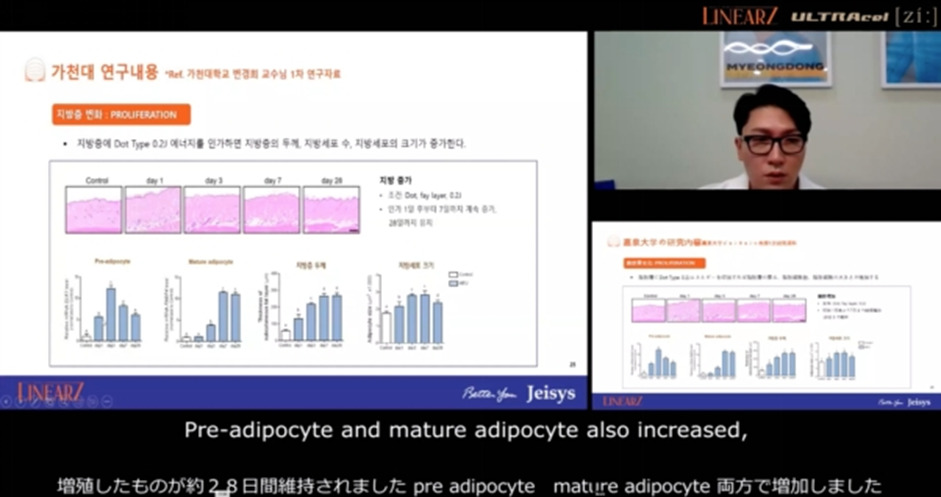
Nextly about the increase in fat layer, the following results were obtained when irradiated with 0.2 to 1 J for Dot mode and Linear mode, respectively.
●The thickness of fat layer, cell count, and fat cell size increase only when irradiated with the 0.2J Dot mode.
●Continued increase for 1 week from the 1st day irradiated, maintained for about 28 days.
●Both preadipocyte and mature adipocyte increased.
●Increased fat layer thickness and fat cell size not only right after irradiation, but also 1 week and 28 days later.
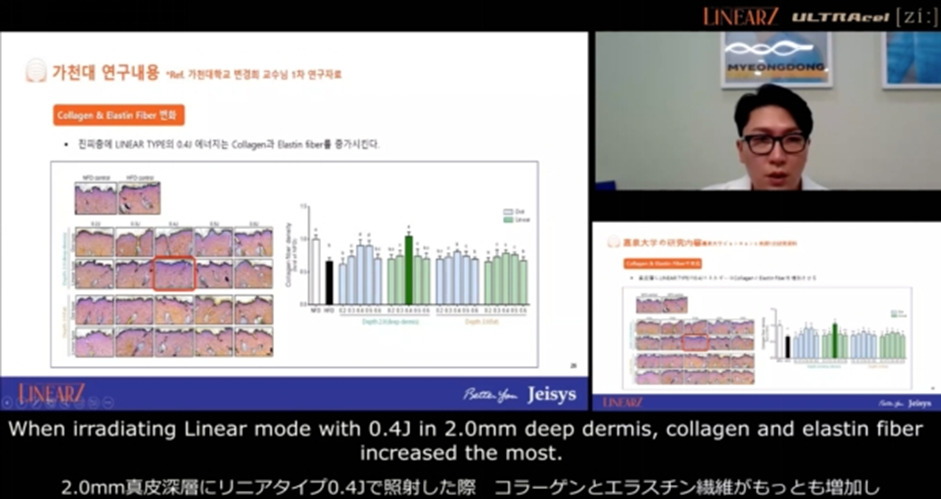
Finally, about changes in collagen and elastin fibers,
●0.4J Linear mode irradiation to 2.0mm deep dermis layer resulted in the largest increase in collagen and elastin fibers. ●Linear mode irradiation increased collagen and elastin fibers to a greater extent than Dot mode irradiation.
●0.4J Linear mode irradiation suppressed fiber degradation and reduced collagen and elastin loss.
●The change in fibril synthesis factor was greatest at 0.4J Linear mode irradiation.
The following protocol was developed by the study results.
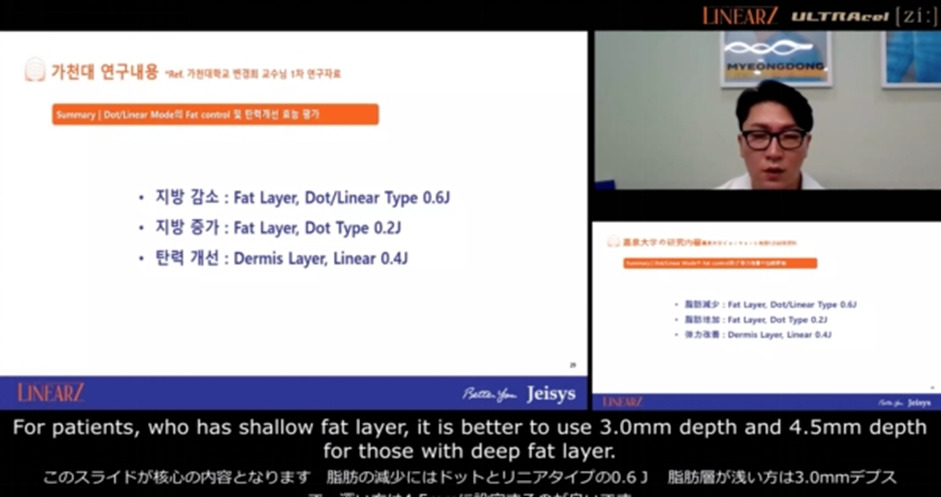
1. For fat layer reduction, irradiate at 0.6 J or higher with Dot mode and Linear mode.
a. Set 3.0 mm depth for patients with shallower fat layers
b. Set 4.5mm depth for patients with thicker fat layers
2. For fat layer increase, irradiate at 0.2J with Dot mode
a. Not irradiating the dermis layer may have better effect on fat gain.
3. For the elasticity of the dermis layer, irradiate Linear mode at 0.4J to 2.0mm of the dermis layer.
4. When both fat layer reduction and dermal layer elasticity improvement are desired, irradiate the dermal layer after the fat layer.
Demonstration of the procedure and photos
Videos of the procedure for females in their 50s and 20s are available for viewing. You can also see many before and after photos of the procedure.



